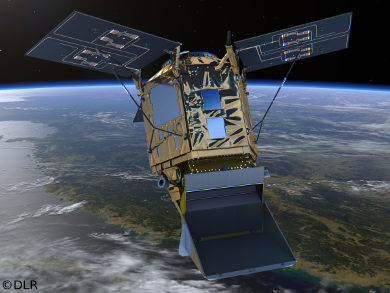Sentinel-5P, the most recent satellite to join Europe’s Copernicus Earth observation program, is the first atmospheric sensor in the program to come into operation. Sentinel-5P – the P stands for ‘Precursor’ – is part of the Sentinel satellite fleet, which has been gradually formed since 2014. By 2030, the environmental monitoring program will include 20 Earth observation satellites.
Sentinel-5P will observe trace gases in Earth’s atmosphere from an altitude of 824 km. It’s TROPOMI (Tropospheric Monitoring Instrument) spectrometer will deliver information on air pollution, the condition of the atmosphere, and climatic changes on a daily basis. TROPOMI measures in the ultraviolet, visible, near and short infrared wavelength ranges and monitors a wide variety of air pollutants like NO2, O3, formaldehyde, sulfur oxides, CH4, and CO. The trace gas data will be used in the Copernicus Atmosphere Monitoring Service to provide information on regional air pollution. The satellite will also monitor volcanic ash as part of flight safety or will issue warnings of excessive UV radiation.
The DLR German Remote Sensing Data Center (DFD), Oberpfaffenhofen, has developed and integrated the entire payload ground segment, including data reception, processing, archiving,and distribution. The data processors that convert the measurement data into geophysical data products were developed by the DLR Remote Sensing Technology Institute, the University of Bremen, and the Max Planck Institute for Chemistry in Mainz as part of a European consortium.




